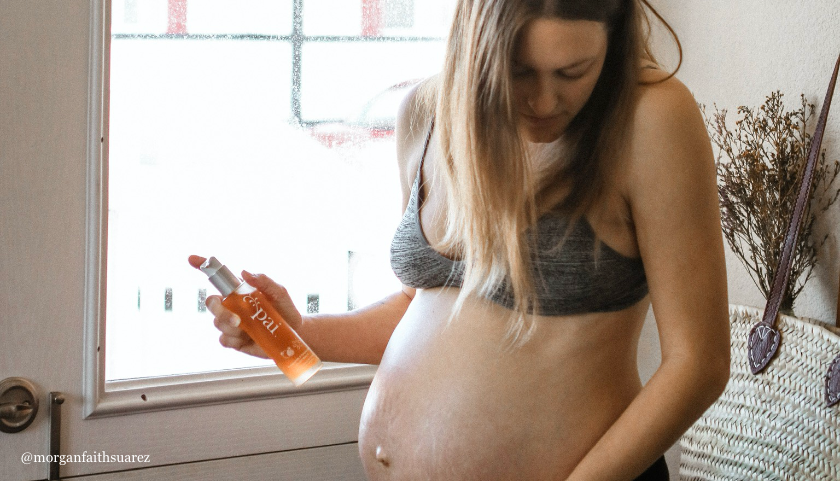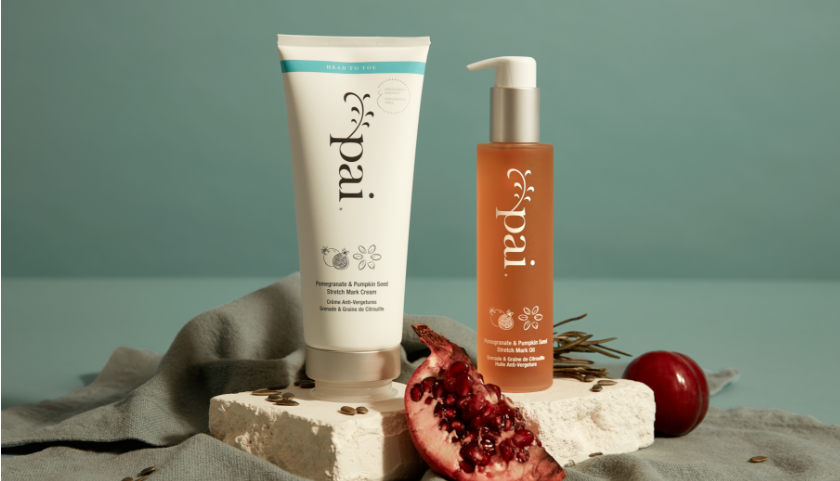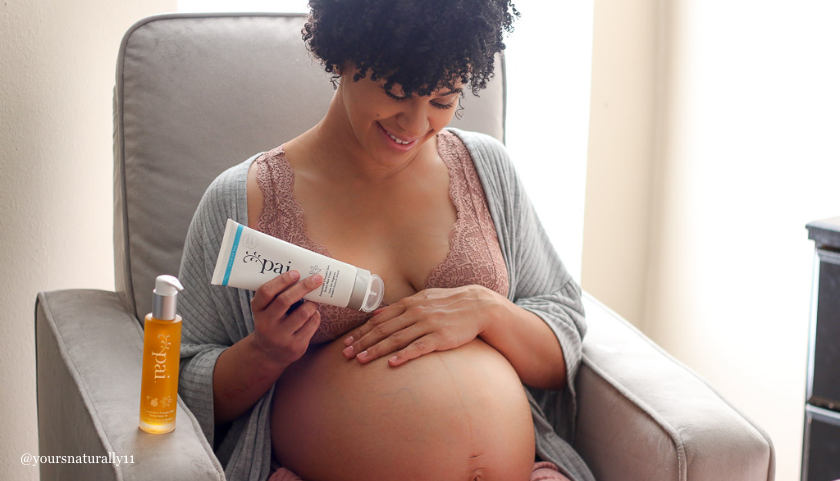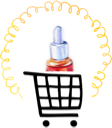Most of us will have discovered the tell-tale silvery line of a stretch mark somewhere on our body. Although many see them as an annoyance, we like to think of them as our tiger stripes!
Still, we often get a lot of questions around stretch marks. What causes them, can you prevent them during pregnancy, and how to get rid of them.
So, what exactly are stretch marks?
Our skin is made up of layers that help to make it strong and elastic. But when the skin is stretched too quickly or isn’t properly prepared, the middle layer of the skin (known as the dermis) can tear.
These tears create lesions in this layer of skin. These can look pink, red or purple at first. Much like a scar, these lines fade over time, to become silvery white.
This can happen during puberty, weight loss and weight gain. But despite affecting
men and women equally, stretch marks are most often associated with pregnancy.
Although nine months can feel like a very long time, a baby’s development causes the skin on the belly to stretch rapidly, making it thinner and more fragile.

How to get rid of stretch marks
Although stretch marks are incredibly common and a testament to the amazing changes your body has been through, most of us want to avoid stretch marks where possible. Not least because they can feel itchy and appear raised when they first develop.
There is no quick fix once they appear and genetics can make some people more prone to stretch marks than others. The key is doing what you can to really prepare the skin and support it as it stretches.
Creams and oils
We recommend using a cream and an oil. They offer very different benefits to the skin, helping to support cell structure and elasticity.
The cream helps to hydrate for optimum tissue repair, while a deep conditioning oil helps to keep skin soft and supple for round the clock protection against stretch marks.
Moisturise inside and out
Dry skin is less elastic and therefore more prone to stretch marks. Keep it hydrated by drinking plenty of water and using a daily body cream that is high in those Essential Fatty Acids.

Stretch marks and pregnancy
No discussion on skin care during pregnancy would be complete without addressing the issue of stretch marks.
Aside from the filtered and airbrushed bodies you might see on Instagram – in the real world it’s difficult to avoid stretch marks. In fact, around 70% of us will develop them as our pregnant skin stretches beyond its natural ability.
The good news is that there are a number of things we can do to minimise their severity and appearance. And, if we’re lucky, eliminate them altogether.
How to prevent pregnancy stretch marks?
Natural oils and butters
As stretch marks are an issue that resonates deeply with pregnant women, hundreds of products have flooded the market that claim to keep them at bay.
Adopt a healthy scepticism as many of the stretch mark oils available are paraffin oil based – a petroleum derivative. Don’t believe us? Check the ingredients list, and try and make this a habit every time you buy.
Natural oils and butters are safest for soon-to-be mums. When massaged into the skin, Jojoba oil can help improve its elasticity and reduce the likelihood of it becoming over-stretched. If those red-purple lines do sneak through, applying this same oil postnatally can help to smooth skin and reduce their appearance.

Shea butter is another great ingredient for taming stretch marks and one that many women swear by. As well as being highly-moisturising, Shea butter also has a unique ability to reduce and heal scars.
Our Pumpkin & Pomegranate Stretch Mark System is bursting with a combination of Vitamins E & C, plus Omegas 3,5,6,7 & 9. These protect skin cell structure and enhance elasticity, helping skin to stretch and bounce back into shape without showing signs of damage.
Feed your skin
A healthy diet is essential for smooth, supple skin. We recommend eating foods rich in Vitamins A, B, & C and Essential Fatty Acids (Omegas 3, 6 & 9) throughout pregnancy. These will allow your skin to stretch better and encourage the replacement of damaged cells with new healthy ones.
Those nine months are among the most important in a woman’s life – remember to stay informed, open-minded, but above all…excited!


